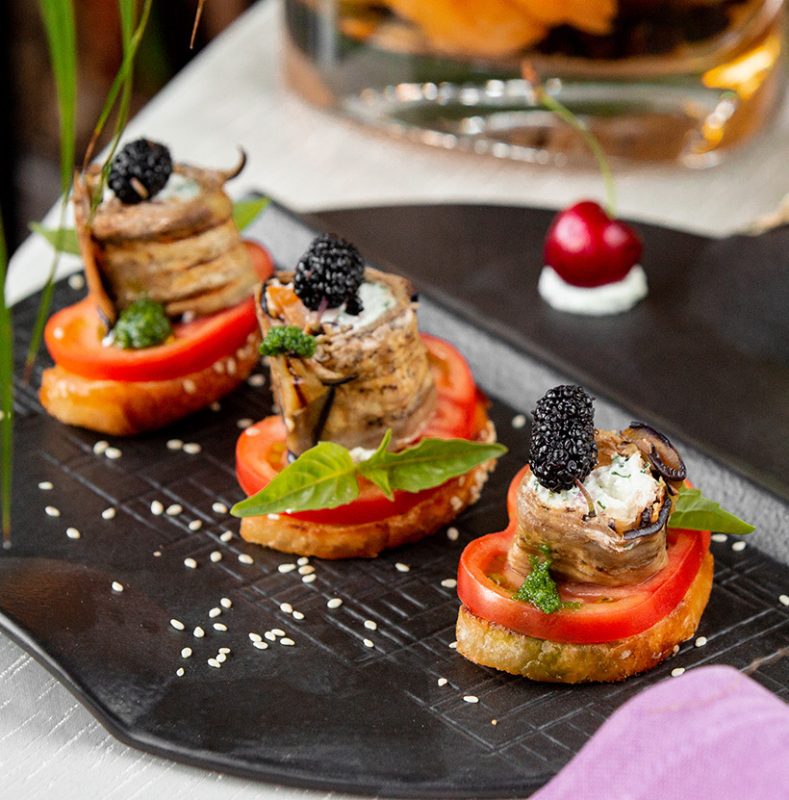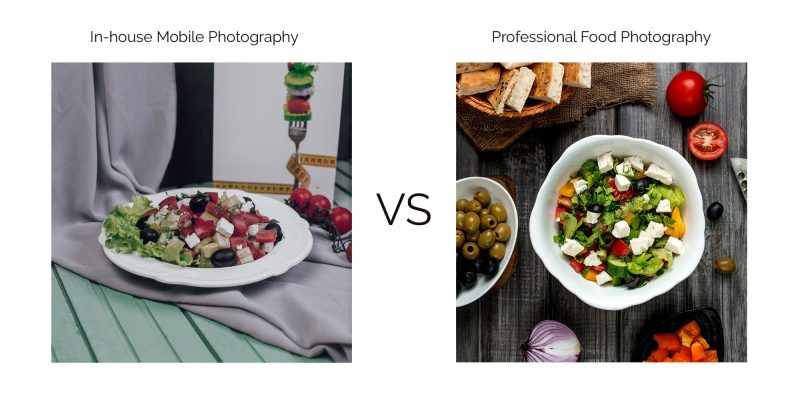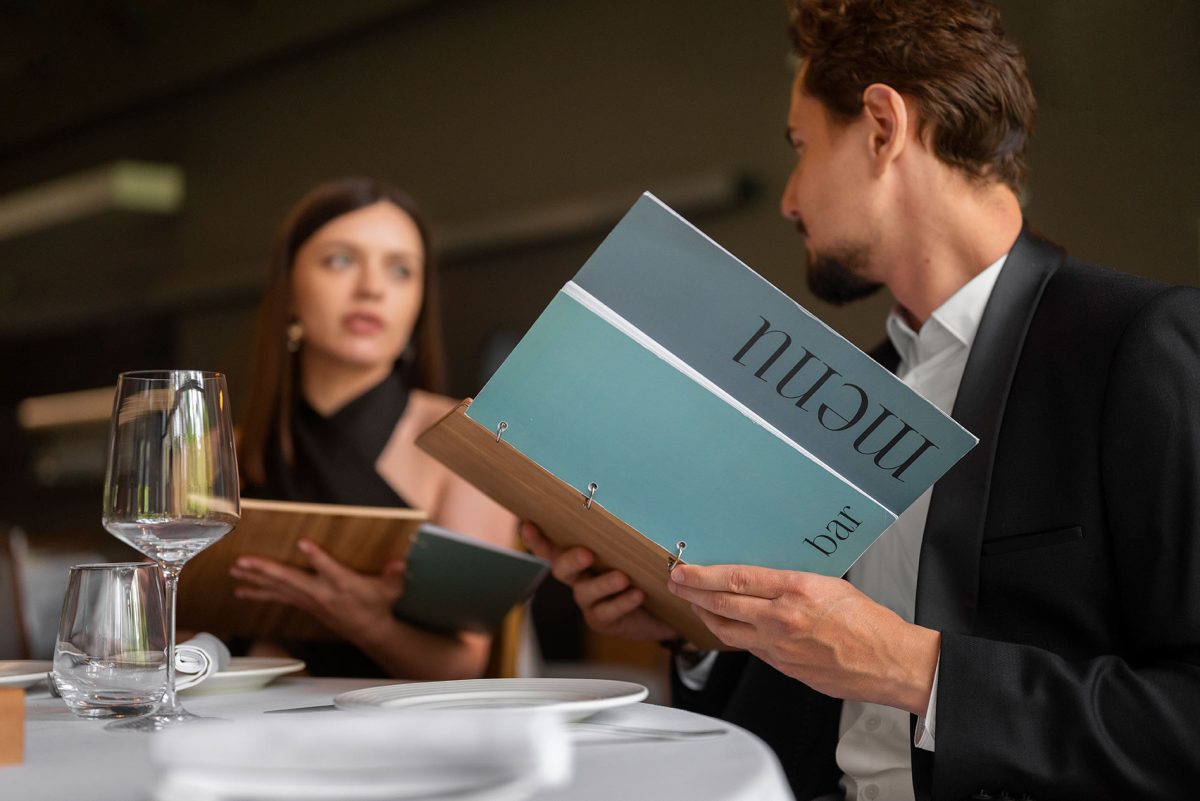A well-crafted restaurant menu design is essential for any dining establishment’s success. Beyond just listing dishes and prices, a menu is a powerful tool that communicates your restaurant’s personality, enhances operational efficiency, promotes profitability, and keeps your brand top-of-mind for customers. Whether you are focusing on a fine dining menu design, fast food menu design or even a small café menu design, the impact of a thoughtfully designed menu cannot be overstated.
Setting Goals for Your Menu Design
Your menu is more than a functional list; it is a representation of your brand’s identity. It should leave a lasting impression on your guests, enticing them to return and recommend your establishment to their friends, families and colleagues. Key goals for your restaurant menu design include:
- Expressing your brand’s personality: Whether your restaurant is classy and sophisticated or fun-loving and casual, your menu should reflect this.
- Enhancing customer experience: A well-designed menu should be easy to navigate and visually appealing, enhancing the dining experience.
- Driving profitability: Strategic placement of featured dish or item and highlighting of high-margin items can boost your restaurant’s revenue.
Research and Planning Before Designing
Effective menu design starts with thorough research. Analyze your restaurant’s financial and marketing data, review competitors’ menus, and study industry trends. Understand your local market by considering:
- What unique offerings can your menu provide?
- How does your pricing compare with nearby establishments or competitors?
- What variety can you introduce to stand out?
- Is there a brand story for your Restaurant?
These are some of the plans that can kick-start your menu designs and create a beautiful journey for your restaurant business.
Key Considerations Of Designing The Menu
Creating an effective restaurant menu goes beyond listing dishes and prices. It’s about crafting a visual and textual representation of your brand, enticing customers, and guiding their dining experience. Below are the essential considerations to keep in mind:
1. Know Your Restaurant’s Identity
Incorprating the brand story as in introduction of your restaurant is important as it sets the uniqueness of the food you serve. Your menu should reflect the core personality of your establishment.
Whether you offer fast food, fine dining, or a cozy café experience, the design should align with your branding. For example, a fine dining menu design might use elegant fonts and minimalistic layouts, while a fast food menu design could be more vibrant and image-heavy.
2. Understand Your Audience
Consider the preferences and habits of your clientele. Are they families looking for a diverse range of options, or are they young professionals seeking quick bites? Tailor your menu sections accordingly, perhaps including a kids’ menu or highlighting popular beverage menu designs for evening crowds.
3. Focus on Content
Clarity and readability are paramount. Ensure descriptions are concise yet engaging, and prominently feature your star dishes. For example “Chef’s Recommendation”. Use enticing language to highlight unique ingredients or preparation methods, which can set your menu apart.

4. Incorporating Merchandising Techniques
Use merchandising techniques to spotlight signature dishes and new items. For example, boxing or adding images can draw attention to these items. Creative naming and descriptive text can make dishes sound more appealing, increasing the likelihood of orders.
5. Leverage On Professional Food Photography
High-quality food photography is a powerful tool in any menu design. A well-shot image can significantly increase the appeal of a dish, leading to higher orders. However, it’s crucial to use professional photography to capture the essence of each dish. Poorly lit or unappetizing images can have the opposite effect.

- Highlighting Signature Dishes
Use images strategically for key items, ensuring they stand out. For example, a striking photo of a signature dish in a fine dining menu design can captivate diners’ attention. - Quality and Presentation: Invest in professional food photography to ensure dishes look as delicious as they taste. High-resolution images that accurately represent the meal can enhance the customer’s experience and trust.
By thoughtfully integrating these elements, especially leveraging on professional food photography, you can create a compelling and effective restaurant menu that not only represents your brand but also enhances the dining experience and drives revenue.
6. Optimize Layout and Design Elements
Utilize design psychology principles like white spaces and flow of content to place high-margin items in areas where customers naturally focus their attention. Make your menu design more visually appealing by balancing out the use of white spaces to avoid clutters. Thus ensuring a pleasant navigation browsing experience.
7. Pricing and Profitability
Strategically price items to reflect value while promoting profitability. Highlight higher-margin dishes subtly, and avoid using dollar signs, as studies suggest this can increase spending.
Pricing should reflect the value and uniqueness of your offerings. Conduct regular profitability analyses to ensure your menu remains competitive and profitable. Highlight high-margin items to boost revenue, and adjust pricing based on market trends and customer feedback.
Avoiding Common Menu Design Mistakes
Avoid pitfalls such as overly small print, unwieldy menu sizes, outdated designs, and generic clip art. Ensure your menu aligns with your brand’s identity and provides a seamless and comfortable experience for customers.
The Transition to Digital and Online Menus
In today’s digital age, having an online menu is as crucial as a physical one. However, avoid simply uploading a PDF; instead, create a mobile-friendly, search engine-optimized online menu. This ensures better accessibility for customers and improves your restaurant’s visibility in search results or even share them on social media to maximize exposure and discovery.
Developing a website highlighting your restaurant’s menu can be useful for customers making an event reservation. Place your menu on website and share on social media to entice audiences to visit or make reservations. There are plenty of ways to promote your restaurant.
Conclusion
Restaurant menu design plays a pivotal role in shaping customer experience and driving business success. By focusing on strategic design elements, thorough research, and modern digital practices, your menu can become a powerful tool in your restaurant’s marketing arsenal. Whether it’s a cafe menu design, drinks menu design, or a mobile menu design, investing in thoughtful and innovative menu design is essential for any restaurant aiming for long-term success.
If you’re looking to elevate your menu design and ensure it perfectly reflects your brand, consider our Professional Graphic Design Services. Our team specializes in creating captivating menu designs that resonate with your audience and boost your restaurant’s appeal.

